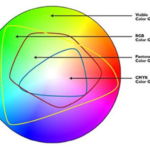The Compact Disc came into wide use after its introduction by Phillips in the early 1980s. Compact Disc has been a format that remains popular to this day for music and spoken-word programming despite significant inroads by downloadable formats. The Compact Disc is portable, reasonably resistant to physical wear and represents much higher audio quality than is typical with MP3s or iTunes-stored media.
There are two ways to make media compatible with the Compact Disc standard of playback. One method involves moulding the disc in a factory environment and embedding the pits directly into the molded substrate of the disc which is moulded all at once, aluminizing the disc, then sealing it with lacquer that’s cured with UV light. The other method involves using a laser in a recording device to serially change the state of an area of dye representing pits in a pre-moulded disc known as CD-Recordable. The moulding method is commonly called CD Replication and the recording method is called CD Duplication. The difference in terminology is subtle but meaningful within the industry.
CD duplication is appropriate for short runs. The disc surface can be thermally printed, labeled with a laser-printed (or ink-jet on the very lowest end) label, directly printed with inkjet or silk-screen printed if the cost can be justified. Replicated CDs are usually silk-screen printed and sometimes, if the run is of sufficient size and contains other than spot colours, offset printed. The printing is done with UV-cured inks which are permanent and waterproof.
If the quantity of CDs desired is less than 500 units, duplication is usually the only option. Replicated CDs are inexpensive to manufacture, but the glass master and subsequent metal stamper needed for the injection moulding process is definitely not cheap and makes up the bulk of the cost to the manufacturer.
Considering which format to use is a balance of many factors, not solely economics. The decision to use replication versus duplication is down to finished appearance and the ROI over a given period. For instance, if 500 CDs will be sold over the course of a year, replicated CDs make the most sense in terms of presentation.
On the other hand, if there’s no reasonable certainty as to how many units will be sold during a given time-frame, then duplicated CDs are a sensible solution, since small lots can be produced at a know cost. Finally, if an initial run of CDs did well and a reorder for stock doesn’t justify another 500 piece run, duplicated CDs are a reasonable substitute in a subsequent run for many markets.



